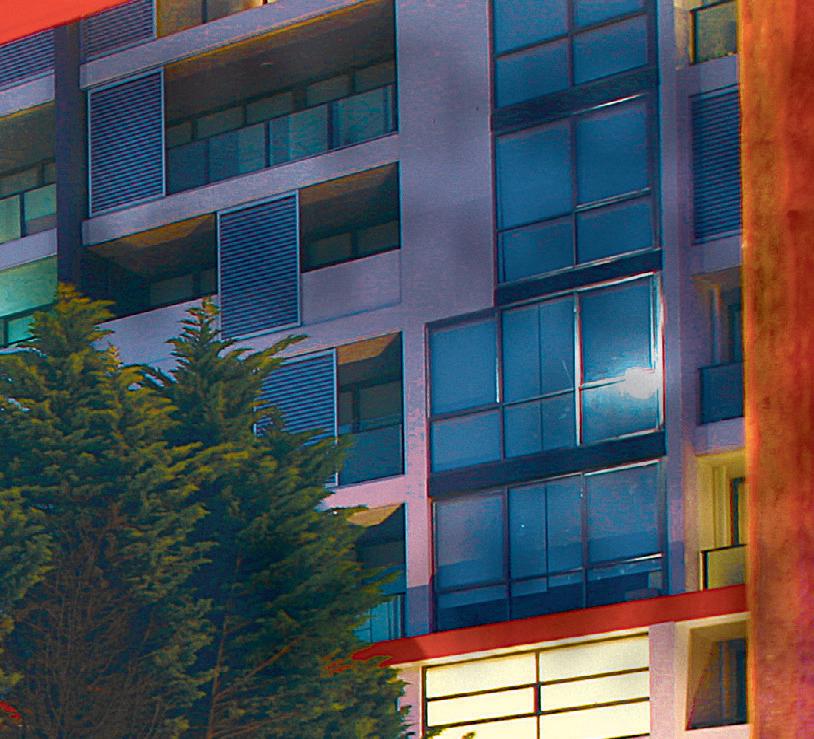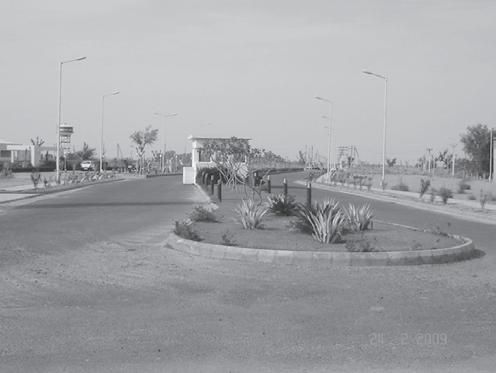
5 minute read
Sharadiyo Utsob
from 2009-09 Sydney (2)
by Indian Link
Manipur and Assam who they would join to welcome the festive season in the Eastern parts of India.
Growing up in Beharampore, I would go around the neighbourhood with my school friends from Mary Immaculate School, to watch the Durga Puja festivities in the local pada It was not just in Beharampore that we went to see the Durga Pritima (idol); we went to Khagra, Gorabazaar Cossimbazar, Madhupur areas too. Sometimes, I would go with my cousins, all in our new clothes, to Swarnamoyee, Bishtupur and Baganpara, and take in the sights of the goddess, all dressed up in her glamorous clothes and jewels.
I would drive with my mum, dad and brother to see the pandals (make-shift temples) of Kadai, Ranibagan, and Swargadham. The aspect of the Puja that always fascinated me in my childhood was the celebration with ‘dunuchi’ dance at the Cossimbazar Choto Rajbari. As the Cossimbazar Puja is 300 years old, it is one of the oldest pujas in the Murshidabad area. In Murshidabad, the Durga Puja would be welcomed with lots of village fairs. How I loved the ‘Khajha’ our parents bought us from the village fairs! The village fair added a new dimension to the magic of Durga Puja in Beharampore, along side ‘kash phull’ blowing gentle in the breeze and the fragrance of the shuli flower which filled the air. My parents, who used to travel to Assam, Manipur and Tripura for the Oil Natural Gas Company (ONGC) of India, would tell us stories of locals celebrating Durga Puja in
The grandeur of the Sharadiyo (autumnal) Durga Puja can be found in Bengali literature since the 11th century. In 14th century, Vidyapati wrote an exemplary illustration of Durga Puja named Durgabhaktitarangini There are historical accounts of Durga Puja being held in the courts of Rajshahi in the 16th century. In the 18th century, it was celebrated in Nadia district. Today, Durga Puja is one of the biggest Hindu festivals celebrated in major global metros, including Sydney.
In my early teens, I moved to Ballygunge in South Calcutta. The first Durga Puja I went to was at Shobhabazar Rajbari. This puja is apparently the first one to be organized by Raja Nabakrishna Deb of Shobhabazar Rajbari in honour of Lord Clive in 1757. This puja was organized to celebrate the victory in the Battle of Plassey. The guest of honour for many wealthy Bengali merchants and traditional zamindar families at this time were officers of East India Company. I saw the use of 108 candles and 108 lotus flowers being used to start the ceremony with ladies in their red-bordered cream-coloured saris with dazzling gold jewellery that made the place look as if Maa Durga had landed right in the midst of the Shobhabazar Rajbari.
Apparently the first Durga Puja was supposedly held in 1610. It was celebrated by the Roychowdhuri family of Barisha. In 1761, ‘Baroyari’ Durga puja was started in Guptipara in Hooghly by 12 young men. So Durga Puja was no longer a private ceremony, it became a community affair organised by a committee which accepted subscriptions for organising the puja. Since then, the Bengal community pujas are known as ‘Baaroyari – ‘baaro’ meaning 12 and ‘yar’ meaning friends.
In 1910 in Kolkata, the first ‘Baroyari’ Durga Puja was organised by the ‘SanatanDharmotsahini Sabha’ at Balaram Bosu Ghat Road, Bhawanipur.
It was Atindranath Bose’s first Sarbojanin Durga Puja in 1926 which opened up the festivities to people of all castes and religions, and brought in a spirit of unity and harmony in Bengal.
During the Kolkata Durga Puja celebration, I would visit the famed potters’ colony Kumartuli, to see the creation of Durga idol. I would keenly observe the pandal being constructed for Ekdalia puja committee, as I would walk down to Mandeville Gardens to attend South Point School in Old Ballygunge.
I would feel a kind of eagerness for the puja as soon as Mahalaya approached. The mood of Durga puja would set within me while listening to Mahishasurmardini on Kolkata radio. The program was popularised since the 1950s. My mother would even play the Mahishasurmardini songs on her gramophone HMV records. School work lost all significance at this time, as it was all about getting together with friends and celebrating the pompousness of puja. I would visit the pandals of North and South Calcutta which sometime would look like the Stupa of Sanchi, Kajuraho or Madhura temple. On the nights of Astami and Nabami, as crowds descended all over Calcutta, I would go on a pandal marathon to see as many Durga idols as possible. To me, the Durga puja celebration in Calcutta is comparable to colourful carnival of Rio de Janerio, Brazil. The Astami and Nabami nights are specially filled with crowds and neon lights - to us, these neon lights made New York’s nightscape look less glamorous. I would catch up with everybody - school friends, local friends and family members who I had not seen in months. In Kolkata, households arrange the most sumptuous food, mandatory among them being the finger-licking luchi and chickpea dal. Homes are cleaned and decorated to entertain guests.
At the end of the four to five day celebration, I would also enjoy the Bisorjon (immersion of the clay idol of the goddess Durga) in Babu Ghat or Bhagirathi River. It is a beautiful scene, with huge gatherings of devotees, all eager to see the last journey of Durga Pratima, only to welcome her again next year.
Today in Sydney, Durga puja is celebrated with enthusiasm at Concord, Carlingford or Croydon. I still enjoy puja hopping - my family and I often spend the morning at one puja, and then drive down to another celebration to see their stage performance in the evening. Last year, I got to see the Concord Durga Puja after watching a game of polo. (I had to attend the polo matches at the Centennial Park in Sydney. I still remember sitting in the Blue Hotel marquee, my mind anxiously waiting for the puja celebration! The polo players played chukka after chukka, my friends sipped Moet & Chandon vintage champagne, fancy canapés did the rounds, and the Jaipur maharajas paraded in their finery, but my mind was set on… Durga! Of course I made it to the Bengali Association’s Durga Puja celebration in Concord, in time).
Long after the season draws to a close, the nostalgia of the Durga Puja prevails in my home, as my family and I browse through the photos of heavily ornamented Durga idols over and over again. La celebration de grandeur de Durgabhaktitarangini in the Southern Hemisphere, is definitely my alltime favourite festival.







617 819
Office - Unit 3 /154-156 Bridge Rd (Cnr of Bridge Rd & Byrne St), Westmead, NSW & Unit 15 / 30-34 Lydbrook St, Wentworthville, NSW
Rare opportunity to invest/ buy in land sale in one of the biggest residential projects in Rajasthan. Experience the Jewel of Marwar. Bikaner’s biggest lifestyle township – Bikaner Enclave.

Key Features: Schools, health centre, community centre with swimming pool, shopping mall, office arcade, food courts, centralised maintenance and estate management, cableTV network, sewage treatment, drinking water supply, multilevel security system, broad tree- lined avenues, detached footpaths within green areas, central theme park, gardens and parks with children’s play area
Phase 1 is sold out, Phase 2 sale has commenced. There are 1400 plots of sizes ranging from 1350 sq.ft (150 sq.yd.) to about 5100 sq,ft. (567 sq.yd). For more details visit www.mjbuildvest.com/bikaner
You can also contact Munish Jain on the following details for enquiry and price: email: aamjaay@hotmail.com


Mobile: +91 98100 83867 Australia email – meetajainau@yahoo.com.au














